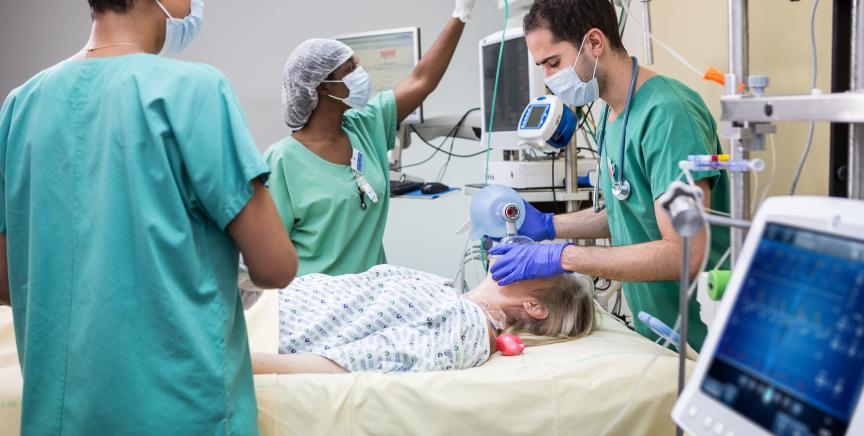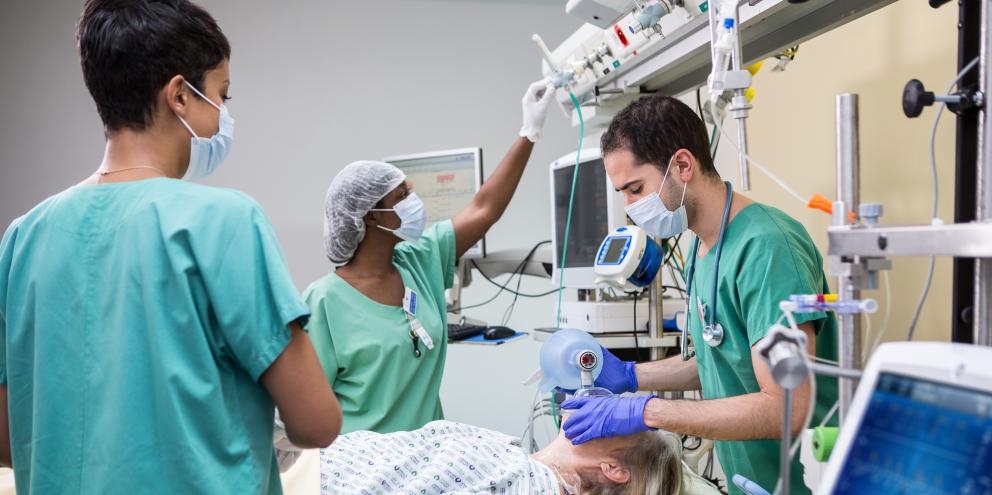
The Challenges of a Hypermetabolic State
Burn patients suffer from persistent and prolonged exaggerated metabolic response. This hypermetabolic state results in higher resting energy expenditure (REE). It also leads to increased catabolism, muscle wasting and cachexia.
With higher energy requirements and increased need for proteins, burn patients present a unique challenge. If these requirements are not met, malnutrition can result leading to:
- Impaired wound healing
- Organ dysfunction
- Susceptibility to infection
- Loss of lean body mass (LBM)
- Prolonged ventilator days
- Increased length of stay
- Increased mortality
Burn patients also transition through three phases post-injury that dramatically alter their nutritional requirements. These phases include:
- Ebb phase – This phase can last less than 24 up to 72 hours after injury and is characterized by low basal metabolic rate and temperature, increased whole-body oxygen consumption and carbon monoxide (CO), hypovolemia and lactic acidosis.
- Flow phase – Lasting 3 – 10 days, patients in the flow phase experience increased REE, temperature, oxygen consumption and carbon monoxide.
- Anabolic phase – This final phase may last weeks to months, continuing the patient’s hypermetabolic state.
All of this highlights the need for adequate assessment and provision of nutritional needs to support these patients. Unfortunately, the use of predictive equations does very little to meet this goal.
The Unreliability of Predictive Equations During Metabolic Stress
Numerous equations, such as the Harris-Benedict, Toronto Formula, Ireton-Jones and Curreri, have been utilized to attempt to predict energy expenditure in burn patients.
Yet, they have all been found to be flawed.
Let’s take a look at the mean error rate3 of just a few of these equations when used in thermally-injured patients:
Method % Mean Error
Milner 16 (Cl of 10 – 20%)
Zawacki 16 (Cl of 9 – 23%)
Xie 16 (Cl of 12 – 24%)
Harris Benedict x 1.5 16 (Cl of 9 – 29%)
Additionally, since there is no consensus as to how clinicians choose which predictive equation to utilize, the results from their use varies widely from clinician to clinician.
This highlights the need for leveraging a more accurate method to measure nutritional requirements in this fragile patient population. Fortunately, IC fulfills that role, precisely determining the calorimetric requirements caused by a hypermetabolic state in real-time to avoid over- and under-feeding.
Improved Nutrition through Measurement, Not Estimation
IC is an objective, accurate measurement of energy expenditure. In IC, respiratory gas exchange is measured by monitoring oxygen inspiration versus carbon dioxide expiration to determine energy metabolism.
The method gives us both resting energy expenditure (REE) and respiratory quotient (RQ), which is used as a marker of IC test validity if it is within the human physiologic range of 0.67-1.3.
This allows the patient’s nutrition to be precisely tailored to address their personal and changing needs, throughout their care journey.
However, it is important to note that while intermittent measurements can provide a snapshot of the patient’s caloric requirements at specific points in time, the most accurate determinations can be made by leveraging continuous monitoring.
Benefits of Providing Proper Nutrition in Burn Injury
By utilizing IC, clinicians are able to provide more precise nutrition administration that:
- Minimizes loss of lean body mass
- Promotes wound healing
- Maintains gut mucosa
- Enhances immune function
- Offers gastrointestinal prophylaxis
- Reduces catecholamine levels
- Lowers mortality
In fact, a recent meta-analysis determined that the use IC in ICU patients resulted in a 23% reduction in mortality4.
Summary
- Meeting the nutritional needs of burn patients is both critically important and complex.
- Indirect calorimetry is the preferred method whenever measuring the nutritional needs of a burn patient is feasible.
- Continuous measurement of REE will assist in supporting the hypermetabolic requirements associated with thermal injury.
- Leveraging indirect calorimetry to precisely meet the nutritional needs of burn patients can result in improved outcomes and reduced mortality.
References
[1] Clark, A., Imran, J., Madni, T. et al. Nutrition and metabolism in burn patients. Burn Trauma 5, 11 (2017). https://doi.org/10.1186/s41038-017-0076-x
[2] Duan, JY., Zheng, WH., Zhou, H. et al. Energy delivery guided by indirect calorimetry in critically ill patients: a systematic review and meta-analysis. Crit Care 25, 88 (2021). https://doi.org/10.1186/s13054-021-03508-6
[3] Dickerson, R., Gervasio, J., Riley, M., Murrell, J., Hickerson, W., Kudsk, K. and Brown, R. (2002), Accuracy of predictive methods to estimate resting energy expenditure of thermally-injured patients. JPEN J Parenter Enteral Nutr, 26: 17-29. https://doi.org/10.1177/014860710202600117
[4] Duan, JY., Zheng, WH., Zhou, H. et al. Energy delivery guided by indirect calorimetry in critically ill patients: a systematic review and meta-analysis. Crit Care 25, 88 (2021). https://doi.org/10.1186/s13054-021-03508-6








